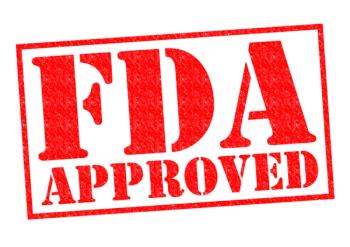
Breast Implant-Associated Anaplastic Large Cell Lymphoma: Symptoms, Diagnosis and Treatment
At the 37th Annual Miami Breast Cancer Conference, Dr. Valerie Lemaine discussed the signs and symptoms of BIA-ALCL, as well as how the disease is diagnosed and treated.
It is important for patients to be aware of the signs and symptoms of breast implant-associated anaplastic large cell lymphoma (BIA-ALCL), according to Dr. Valerie Lemaine.
At the 37th Annual Miami Breast Cancer Conference, Lemain — who is a plastic surgeon with Plastic Surgery Consultants at Minnesota Oncology – discussed the signs and symptoms of BIA-ALCL, as well as how the disease is diagnosed and treated.
BIA-ALCL is an extranodal T-cell lymphoma that develops in the fluid and the capsule tissue adjacent to breast implants. As of July 2019, the Food and Drug Administration (FDA) had received 573 unique, confirmed cases, including 481 that were linked to textured implants, that led to 33 deaths. While many cases of BIA-ALCL are likely still underreported, according to Lemaine, what health care specialists do know is that 481 of these cases are linked to the Allergan BioCell textured implants. To date, there have been no confirmed cases of BIA-ALCL associated with smooth implants alone, but in those who have a complex history and had several breast implants over that time.
BIA-ALCL presents clinically as a seroma, a collection of fluid that builds up under the surface of the skin around the breast implant, which occurs on average eight to 10 years after the initial placement of the textured implant. Other symptoms include a palpable mass, palpable lymphadenooathy (enlarged lymph nodes), skin rash, fevers and capsular contracture (a tissue capsule that tightens around and squeezes the implant).
Unfortunately, the exact etiology of BIA-ALCL is unknown, but the risk appears to be higher with textured-surface breast implants.
If BIA-ALCL is suspected, the first step is to undergo a breast ultrasound. “If the ultrasound is indeterminate, the next step is to do a breast MRI. And it's important to know that the mammogram itself is not the greatest imaging modality for BIA-ALCL. The next step, especially knowing that patients present with a seroma fluid collection is to do a fine needle aspiration.
At times, if this suspicion occurs on an emergency room visit, fluid will be collected and the capsule will be sent to pathology. “Another thing that's important to know is that it is normal to have a small amount of fluid around breast implants,” Lemaine added.
“The ALCL cells will be floating in the seroma fluid and there will be no capsule involvement,” she explained. “As the disease progresses, there will be accumulation of tumor cells on the luminal side of the capsule and eventually this will progress to full capsular invasion. In the later stages, the invasion of the breast and surrounding soft tissue as well as axillary lymph node will be found.”
Disease stages include 1a (35%-70%), 1b (3%-11%), 1c (8%-13%), 2a (8%-25%), 2b (3%-5%), 3 (3%-9%) and 4 (1%-2%).
Surgical treatment for BIA-ALCL includes surgical excision if the disease is noninvasive. Moreover, the implants are removed as well. Chemotherapy is administered in the adjuvant setting if the disease is stage 2 and higher, and radiation is given if margins are positive and/or there is chest wall involvement.
A 2016 study showed that overall survival rates at three and five years were 94% and 91%, respectively.
After treatment, a physical exam will be done every three to six months for two years, as well as a PET/CT scan every six months for two years.
“At this time, the FDA does not recommend removal of these or other types of breast implants in patients who have no symptoms due to the low risk of developing BIA-ALCLC,” Lemaine said. “(Health care providers) should inform you patients about the risk of developing BIA-ALCL and what to look for.”





